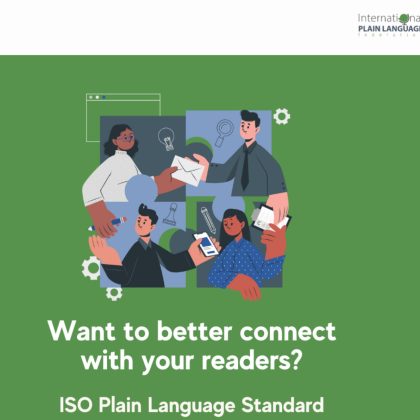
After a highly anticipated countdown, the International Plain Language Federation (IPLF) has successfully launched the International Organization for Standardization’s (ISO) project to develop a comprehensive plain language standard, ISO 24495-1. This significant milestone in promoting effective communication comes after much anticipation among language professionals worldwide. The plain language standard is officially released today, the 20th of June, marking a new era in fostering accessibility in written communication.
Prior to the introduction of this groundbreaking standard, there existed no universally recognized benchmark for plain language creation or evaluation. This lack of standardization posed challenges for writers striving to measure the quality of their documents and processes. However, with the release of the plain language standard (ISO 24495-1), language professionals now have clear guidelines to produce effective and accessible documents.
Experts from numerous countries and linguistic backgrounds have extensively highlighted the benefits of plain language. Improved communication across all industries and sectors enhances comprehension and meets the readers’ needs.
Developed through ISO, the plain language standard (ISO 24495-1) is based on an internationally agreed-upon definition of plain language. This international effort to establish the standard has been years in the making, with formal discussions on creating an international benchmark dating back to 2007. The dedication and collaboration of plain language experts from various countries is evident in the extensive timeline of the ISO Plain Language Standard’s development.
The language-neutrality of the standard ensures its applicability across different languages and sectors, facilitating its widespread adoption and implementation.
To access the plain language standard (ISO 24495-1), interested parties will be able to acquire a copy through their country’s standard-setting body or directly from the ISO Store, when it becomes available. By embracing this groundbreaking standard, organizations and individuals can join the global movement toward enhancing communication clarity and accessibility, benefiting both writers and readers alike.
The Centre for Accessibility Australia is excited about this update and to have been a part of this ongoing process.
